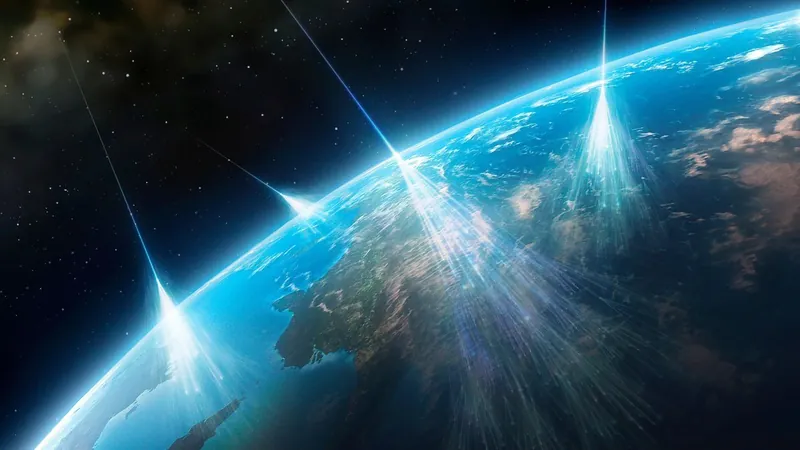
Unraveling the Mystery: Scientists Discover the Most Powerful Cosmic Rays Ever Detected — Are Their Origins Right Next Door?
2024-11-25
Author: Wei
Unraveling the Mystery: Scientists Discover the Most Powerful Cosmic Rays Ever Detected — Are Their Origins Right Next Door?
Scientists have made an astonishing discovery in the field of astrophysics: they have detected the most energetic cosmic rays ever recorded, originating from mysterious sources that appear to be surprisingly close to Earth. These cosmic rays, made up of electrons and their antimatter counterparts known as positrons, have been observed at staggering energies reaching up to 40 teraelectronvolts (TeV), which is an incredible 40,000 times more powerful than visible light!
Using the High Energy Stereoscopic System (HESS) observatory located in the remote Khomas Highlands of Namibia, researchers collected data that offers a glimpse into these cosmic enigmas. The rays lose energy as they traverse the vastness of space due to interactions with light and magnetic fields, indicating that their sources must be relatively nearby. However, the precise origins of these cosmic rays remain shrouded in mystery.
In a groundbreaking paper published in the journal Physical Review Letters, lead author Kathrin Egberts, who heads the experimental astroparticle physics department at the University of Potsdam in Germany, emphasized the significance of this finding. "The measured cosmic ray electrons (CRe) most likely originate from just a handful of sources within a few thousand light-years of our solar system," she stated. To put this into perspective, while our Milky Way galaxy spans about 100,000 light-years, these identified sources could be lurking just around the corner in astronomical terms.
Cosmic rays, classified as high-energy particles, typically stem from various sources including solar emissions, stellar explosions known as supernovas, rapidly rotating neutron stars called pulsars, and other unidentified phenomena. When these cosmic rays collide with Earth's upper atmosphere, they generate particle showers which can be detected on the planet's surface. However, tracing these rays back to their original sources is a complicated and often uncertain endeavor.
To detect the cosmic ray electrons, the HESS observatory employed an array of five telescopes, each towering 40 feet (12 meters) high. With over a decade's worth of scanning the upper atmosphere, researchers were on the lookout for faint traces of Cherenkov radiation. This type of radiation occurs when particles outpace the speed of light in a medium, creating a faint blue glow similar to the sonic boom produced by a supersonic jet.
Through meticulous data analysis and sophisticated algorithms designed to filter out background noise, the team constructed an unprecedented energy spectrum that detailed the cosmic rays impacting Earth. Interestingly, as energy levels increased, the frequency of these rays dropped dramatically, posing a challenge for smaller space-based detectors attempting to identify them in adequate numbers.
Despite these challenges, the presence of these exceptionally powerful particles sheds light on the likelihood that several of the cosmic rays’ sources are located near our planet. As scientists continue to investigate these cosmic mysteries, we may be on the brink of uncovering secrets about the dynamic universe and its most energetic phenomena — are we witnessing a newborn understanding of cosmic evolution right in our cosmic neighborhood? Stay tuned as researchers dive deeper into the vast unknown, seeking answers just light-years away!


 Brasil (PT)
Brasil (PT)
 Canada (EN)
Canada (EN)
 Chile (ES)
Chile (ES)
 España (ES)
España (ES)
 France (FR)
France (FR)
 Hong Kong (EN)
Hong Kong (EN)
 Italia (IT)
Italia (IT)
 日本 (JA)
日本 (JA)
 Magyarország (HU)
Magyarország (HU)
 Norge (NO)
Norge (NO)
 Polska (PL)
Polska (PL)
 Schweiz (DE)
Schweiz (DE)
 Singapore (EN)
Singapore (EN)
 Sverige (SV)
Sverige (SV)
 Suomi (FI)
Suomi (FI)
 Türkiye (TR)
Türkiye (TR)